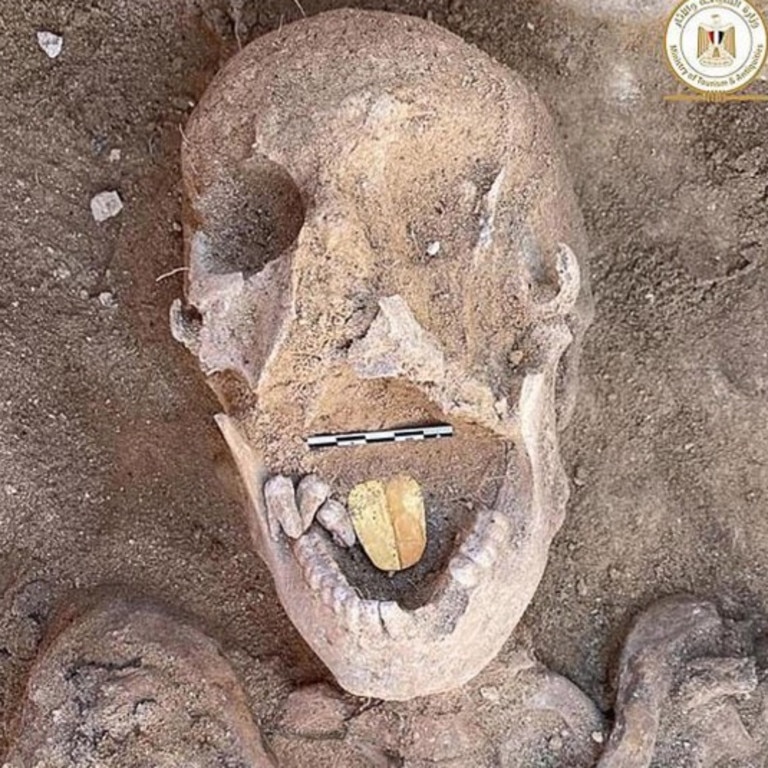Ancient Egyptian mummy found buried with golden tongue
Archaeologists have unearthed an ancient skeleton of a man with a golden tongue at a 2,000-year-old burial site in Egypt.

An ancient mummy with a golden tongue has been unearthed in Egypt.
The expensive-tongued man was buried at a 2,000 year old site associated with rulers who thought jewellery enabled the dead to talk in the afterlife, The Sunreports.

Experts believe the gold tongue was given to the ancient Egyptian man after death in an attempt to help him speak to Osiris, the Egyptian lord of the underworld and judge of the dead.
His real tongue was likely removed during the embalming process.
Ancient Egyptians believed Osiris ruled the underworld and judged the souls of spirits who entered it.
That’s why they thought having the ability to speak to this god and ask for mercy would help people successfully enter the afterlife.

Archaeologists digging at the ancient site of Taposiris Magna discovered 16 burials in rock cut tombs.
The man with the golden tongue was one of these burials but the other 15 proved to be very interesting too.
Stone funeral masks were found on the mummies inside their rocky tombs.

These help to depict what the people may have looked like when they were alive.
University of Santo Domingo researchers have been working at this particular ancient Egyptian site for almost 10 years.
They’ve previously found coins depicting Queen Cleopatra VII’s face and statues and a temple connected to King Ptolemy IV.
The site of Taposiris Magna was said to have been established as a city in ancient Egypt by Pharaoh Ptolemy II Philadelphus sometime between 280 and 270BC.
These rulers could have reigned over the 16 ancient people found in the rock cut tombs.
The man with the gold tongue was the most well preserved of all the mummies and his skeleton could still be made out.
However, lots of the others had decayed away.
Precious artefacts help to give an idea of who these people were.

One was buried with a horned crown that had a snake on the forehead.
Others were buried with trinkets, jewellery and statues.
This suggests the people were of some importance and may have been fairly wealthy when they were alive.
This story was originally published on The Sun and is republished with permission.



